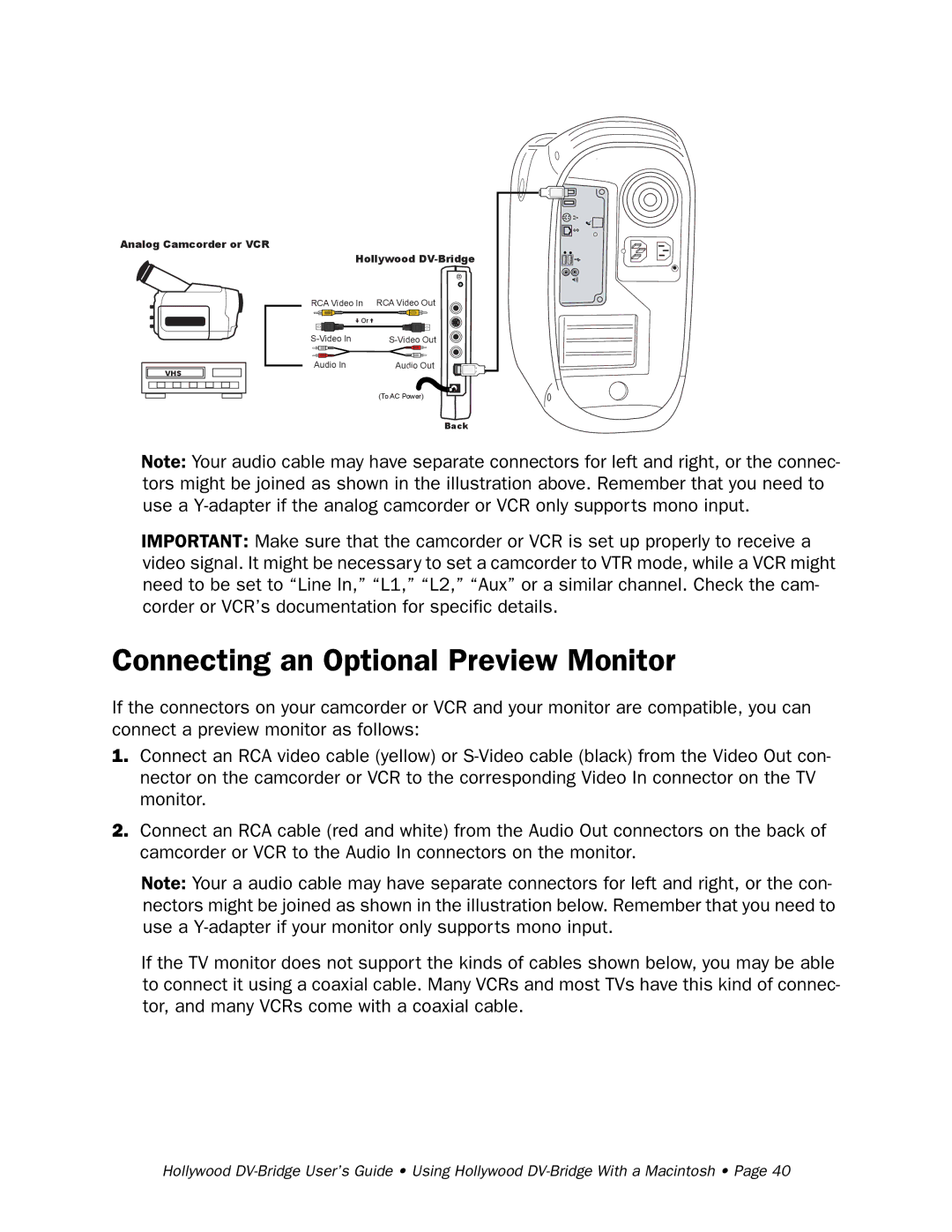
Analog Camcorder or VCR
Hollywood
VHS
RCA Video In | RCA Video Out |
Or |
|
Audio In | Audio Out |
(To AC Power)
Back
Note: Your audio cable may have separate connectors for left and right, or the connec- tors might be joined as shown in the illustration above. Remember that you need to use a
IMPORTANT: Make sure that the camcorder or VCR is set up properly to receive a video signal. It might be necessary to set a camcorder to VTR mode, while a VCR might need to be set to “Line In,” “L1,” “L2,” “Aux” or a similar channel. Check the cam- corder or VCR’s documentation for specific details.
Connecting an Optional Preview Monitor
If the connectors on your camcorder or VCR and your monitor are compatible, you can connect a preview monitor as follows:
1.Connect an RCA video cable (yellow) or
2.Connect an RCA cable (red and white) from the Audio Out connectors on the back of camcorder or VCR to the Audio In connectors on the monitor.
Note: Your a audio cable may have separate connectors for left and right, or the con- nectors might be joined as shown in the illustration below. Remember that you need to use a
If the TV monitor does not support the kinds of cables shown below, you may be able to connect it using a coaxial cable. Many VCRs and most TVs have this kind of connec- tor, and many VCRs come with a coaxial cable.
Hollywood
